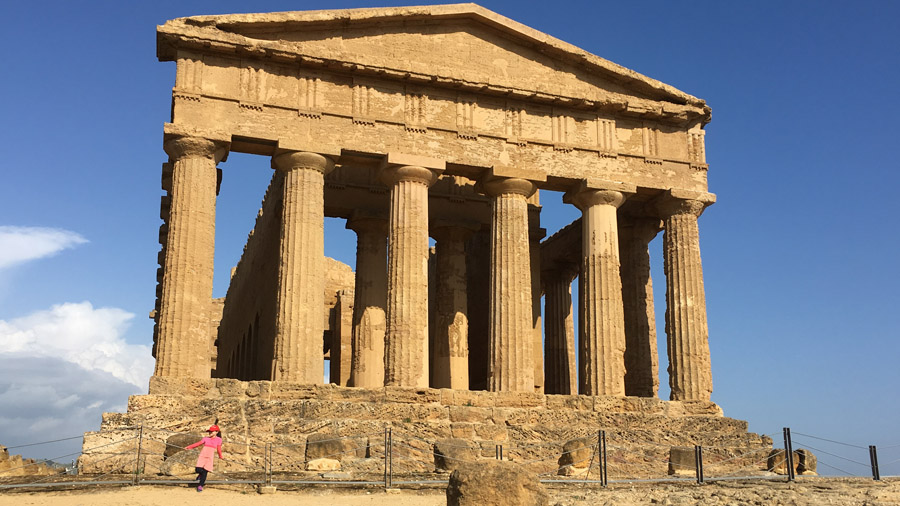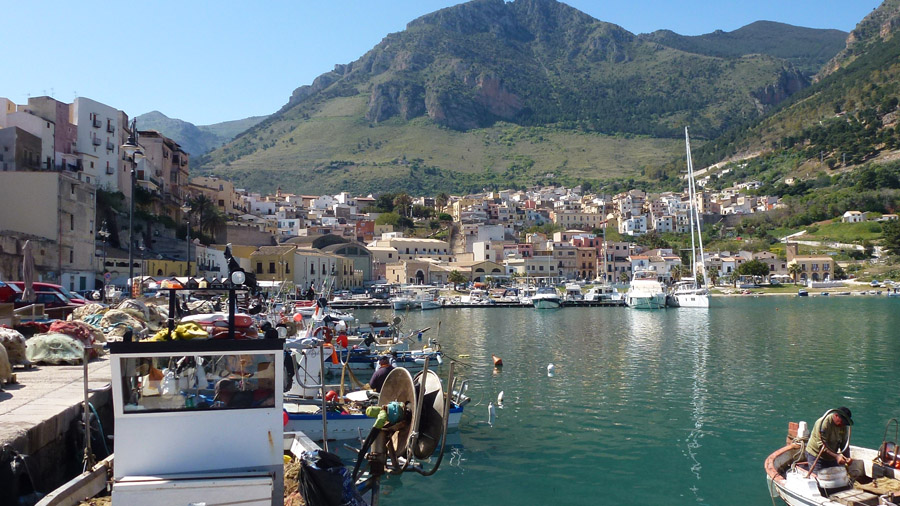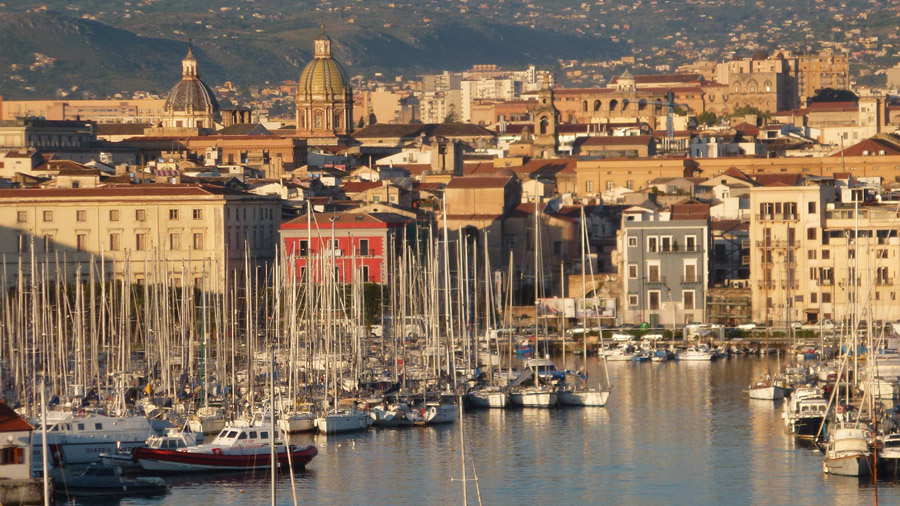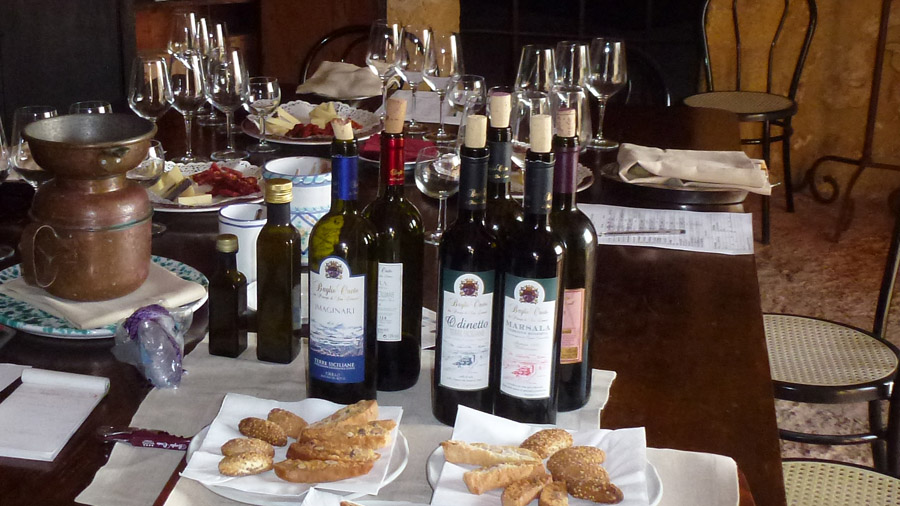Passport Sicily
Sicily is the largest of the Italian islands, separated from the Continent by the Strait of Messina and surrounded by the Ionian, the Tyrrhenian and the Mediterranean Seas. Nature seems to have endowed all its wonders to this land: mountains, hills and above all the sea, with its incredible colors, its crystal-clear water and the beauty of its seabeds, in no way inferior to those of other seas.
Sicily boasts a rich and ancient history characterized by a succession of foreign dominations that contributed to shape Sicilian culture, language and food.
A bike tour in the Val di Noto means extraordinary views, variety of landscapes, picturesque villages, splendid Baroque towns and delicious food. The trip starts on the hills and finishes on the coast, passing through the area of the Late Baroque Towns of the Val di Noto, recognized as Unesco World Heritage site in 2002. A delightful mix of architectural treasures and natural beauties to discover by bike.
Some of our favourite trips

Sicily, the largest of the Italian islands is a concentration of history, ...
View programPractical Sicily
Customs formalities:
For residents of the European Union, no visa is required to enter Italian territory.
For residents outside the European Union, please contact the Italian Embassy nearest to your place of residence.
Access:
The main airport to get to south-eastern Sicily is Catania Airport, linked by direct flights to Paris and several cities. There are also the smaller Comiso Airport, near Ragusa, where it is possible to fly via Rome or Milan, and Palermo Airport, which is a little further from the area.
You can also get to Catania by a sleeper train departing from Paris, Gare de Lyon: www.trenitalia.it. By car, please note that the distance between Paris and Catania is 2.200 km and you have to pass through Geneva, Bologna and Florence, then go down towards Rome and Naples until Villa San Giovanni, where you cross the Strait of Messina and arrive in Sicily.
Preferred periods:
You can visit Sicily all year round, thanks to its Mediterranean climate, mild in winter, hot and dry in summer. The best seasons are anyway spring and autumn. You will therefore avoid July and August, when the heat is hardly bearable for a cycling holiday.
Climate:
Sicily has a typical Mediterranean climate, with mild, wet winters and hot, dry summers. In spring the landscape is green and blooming, whereas in summer the water shortage makes it arid and flowerless. Aridity is strong in the south, affected by the scirocco, a topical hot and dry wind coming from Africa.
The variety of landscapes in Sicily makes it impossible to determine a homogeneous climate for the whole island. The climate in Sicily is generally mild in winter and hot in summer. It’s a Mediterranean climate with some African elements.
However, our tours take place between the hills and the sea, so, for instance, it is very likely that you can find rather different temperatures in Piazza Armerina, 697m above the sea level, and in Syracuse, located on the coast.
For a cycling holiday in this region, we recommend in particular April, May, September and October.
Average temperatures (Piazza Armerina) source fr.weatherspark.com
| Month | Jan | Feb | Mar | Apr | May | Jun | Jul | Aug | Sep | Oct | Nov | Dec |
|---|---|---|---|---|---|---|---|---|---|---|---|---|
| Min (C°) | 4 | 3 | 5 | 7 | 12 | 16 | 19 | 19 | 16 | 12 | 8 | 5 |
| Max (C°) | 10 | 10 | 13 | 16 | 21 | 26 | 29 | 29 | 25 | 21 | 15 | 11 |
Average rainfall (Piazza Armerina) source fr.weatherspark.com
| Month | Jan | Feb | Mar | Apr | May | Jun | Jul | Agu | Sep | Oct | Nov | Dec |
|---|---|---|---|---|---|---|---|---|---|---|---|---|
| Rain (mm) | 54 | 48 | 38 | 26 | 13 | 7 | 4 | 10 | 36 | 50 | 61 | 60 |
| Days | 8 | 8 | 7 | 8 | 5 | 2 | 1 | 2 | 6 | 8 | 9 | 9 |
Average temperatures (Syracuse) source fr.weatherspark.com
| Month | Jan | Feb | Mar | Apr | May | Jun | Jul | Agu | Sep | Oct | Nov | Dec |
|---|---|---|---|---|---|---|---|---|---|---|---|---|
| Min (C°) | 9 | 8 | 9 | 11 | 15 | 19 | 21 | 22 | 20 | 17 | 13 | 10 |
| Max (C°) | 15 | 15 | 17 | 19 | 23 | 27 | 29 | 30 | 27 | 24 | 20 | 17 |
Average rainfall (Syracuse) source fr.weatherspark.com
| Month | Jan | Feb | Mar | Apr | May | Jun | Jul | Agu | Sep | Oct | Nov | Dec |
|---|---|---|---|---|---|---|---|---|---|---|---|---|
| Rain (mm) | 53 | 42 | 32 | 19 | 10 | 4 | 3 | 10 | 36 | 50 | 63 | 63 |
| Days | 10 | 8 | 7 | 5 | 3 | 1 | 1 | 1 | 4 | 6 | 9 | 10 |
Accommodation:
The accommodation used in Sicily is a combination of bed and breakfasts, 3 or 4 star hotels and boutique hotels, which privilege authenticity and are well located. The accommodation is rigorously selected according to the comfort standards for cyclists.
Catering:
It’s impossible to remain indifferent to the taste experience offered by the great variety of Sicilian food, featuring in particular fish, meat and vegetables as well as cakes and ice-cream.
The foundation of Sicilian culinary art is the blend of several cultures occurred over the centuries on the island: the Greeks, the Romans, the Arabs, the Normans have all contributed to the creation of an extraordinary cuisine that is a hymn to the Mediterranean.
One of the most appreciated dish is the Arancino. Arancini are stuffed rice balls, coated with bread crumbs and then deep fried. The most common version is filled with Sicilian ragù, mozzarella cheese and peas. This local speciality is one of the most delicious and typical food of the island. Among the pasta dishes you normally find on the menus in Sicilian restaurants, there are Pasta with sardines and Pasta alla Norma, with tomatoes, aubergines and ricotta salata cheese. As for the antipasti, the caponata is a tasty typical dish made with aubergines, served hot or cold.
Sicilian patisserie deserves special attention, as one of the most established culinary habits of the Sicilians. Sicilian desserts are generally excellent and have different origins: French, Arab, Italian, etc. Cassata is a sweet consisting of round sponge cake moistened with fruit juices or liqueur and layered with ricotta cheese and candied fruit. Traditionally prepared for Easter time, cassata is nowadays proposed all year round in many restaurants in Italy and all over the world. Cannolo is another Sicilian speciality which is very popular throughout Italy. Cannoli are tube-shaped shells of fried pastry dough, filled with a sweet creamy filling usually containing ricotta cheese. The chocolate of Modica must be mentioned, too. Introduced in Sicily by the Arabs, it is now exported outside Italy.
Another must is the Sicilian granita with brioche. The brioche, a yeast pastry, is normally served slightly warm in order to create a delicious contrast with the cold granita, which can be prepared using different flavourings, such as lemon, almond, coffee and pistachio. The choice is yours! There are several excellent wines produced in Sicily according to the ancient tradition of the cultivation of the vine. Marsala, the famous fortified wine produced in the Marsala area, has been the first Italian wine to receive the DOC status. Nero d’Avola is definitely one of the most renowned grape varieties in Sicily; other well-known grape varieties are Grillo, Catarratto, Cerasuolo di Vittoria, Inzolia, Zibibbo or Muscat of Alexandria and Malvasia.*
Breakfast is normally suitable for cyclists and should give you what you need to start your day. A light lunch at midday will be an opportunity to take a well deserved break, as recommended in your road-book.
Buon appetito!
(* to be enjoyed with moderation when cycling!)
Money and budget:
Euro is the official currency, as in the rest of Italy. Most businesses accept credit cards with or without contact.
A Cappuccino costs about 1,50 € and a pinto of local beer around 3,50 € (2018).
Must-sees:
Situated in south-eastern Sicily, Val di Noto (the Noto Valley) – with its eight gorgeous late-Baroque cities – became one of the Italian UNESCO World Heritage Sites in 2002. The eight cities are: Caltagirone, Militello in Val di Catania, Catania, Modica, Noto, Palazzolo Acreide, Ragusa and Scicli. These cities already existed during the Medieval Age, but were rebuilt (in part or entirely) after the catastrophic earthquake of 1693.
Having followed the stylistic model predominant during the era, the cities’ architecture, urban plan and decorations constitute the culmination of one of the last periods of Baroque’s flourish in Europe.
This region is also interesting for its archaeological sites of international relevance, such as the mosaics at the Villa Romana del Casale, near Piazza Armerina, and the Neapolis Archaeological Park in Syracuse.
Cycling from one town to the other, between the hills and the sea, you can admire the beauty and variety of the landscape, surrounded by olive, carob, orange and lemon trees, vineyards and prickly pears.
Bike rental:
The bicycles available for rent are hybrid, road or electric-assisted bikes. The equipment provided is: helmet, GPS and rear pannier. In case of a puncture, you have what you need to repair it (repair kit, pump). Bicycles are regularly maintained between each rental.
Rent on site or come with your bike?
This is a question that many are asking! Besides the space that a bike takes in addition to luggage, it can also be damaged during transportation. Renting allows you to benefit from a quality service (the material is robust and adapted). It may also be an opportunity to try out an ebike which will be a real ally in the climbs and will help you in your efforts against the wind. Battery life is largely sufficient for daily rides up to +/- 80km.
If you are bringing your own bike, make sure you have it checked before your holiday (check that the tyres and brakes are good in particular). Be aware that this brings additional costs to your holiday. Be sure you can handle problems that might occur whilst you are away. Be careful also with the transportation of your bike. If you are using a vehicle with a rear bike carrier, check the bike mountings and the visibility of the license plate.
Keep in mind:
- A bright yellow jacket must be worn at dusk and in case of poor visibility (fog, heavy rain, etc.)
- Helmets are mandatory until 12 years old and highly recommended for all.
- Some of the cycle routes use low-traffic roads, which are shared with cars: keep to the right, in single file.
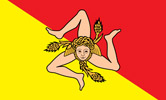
Identity Card
Name:
Sicily
Country:
Italy
Capital:
Palerme
Currency:
Euro
Population:
4 980 590 (2019)
Surface Area:
25 711 km²
Time Zone:
Paris (GMT+1)
International Code:
+39


